Bodum Chambord French Press – classic, quick, chic coffee
I put the iconic Bodum Chambord French press through its paces
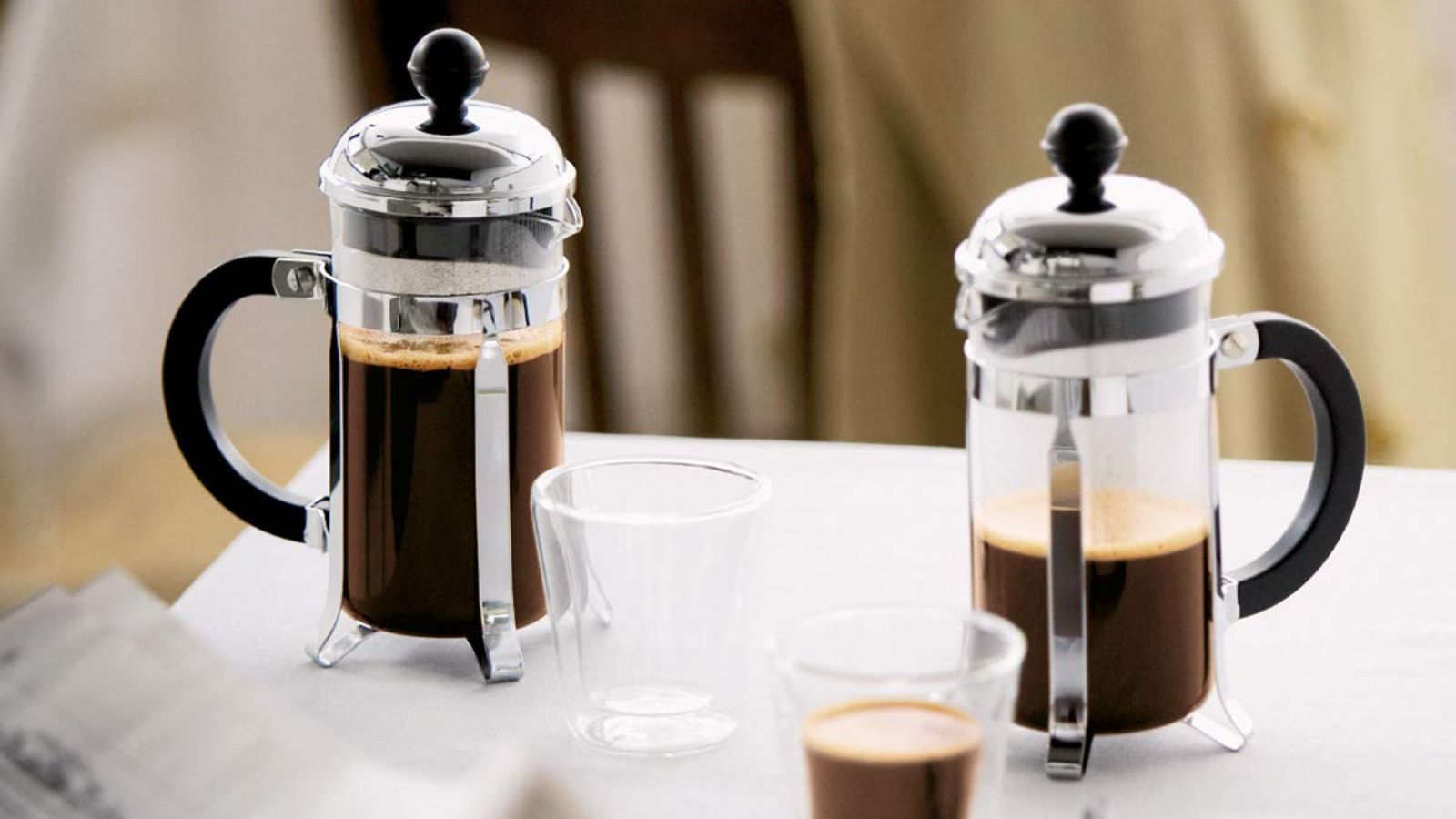
The classic, elegant, and simple style of the Chambord is reflected in the flavors it brews. This makes some of the best French press coffee and (even better) it's easy to use. Our only issue is the carafe: it is fragile and a poor insulator.
-
+
Classic design
-
+
Easy to use
-
+
Makes smooth coffee
-
+
Great value
-
+
Available in a range of sizes
-
+
Transparent glass
-
-
Glass is thin
-
-
Not the best insulator
-
-
Filter position is very specific
You can trust Homes & Gardens.

Bodum has been making their bistro-style, domed French press for nearly 75 years. In that time, they've expanded the size and finish, but kept the same design. It's an iconic model – in fact, it's probably the one you imagine when you think of a French press.
But that kind of longevity can easily turn into stagnation, and with newer brands making big leaps in insulation and filtration, it's not out of the question that Bodum would fall behind.
As H&G's coffee expert and a former-barista, it was only a matter of time before I put it through our rigorous rounds of testing. I was mostly impressed with this French press. It's passed the aesthetic, taste, and process tests. The combination of style, simplicity, and delicious coffee brewing earns it one of the top spots in our buying guide for the best French presses on the market.
Specifications
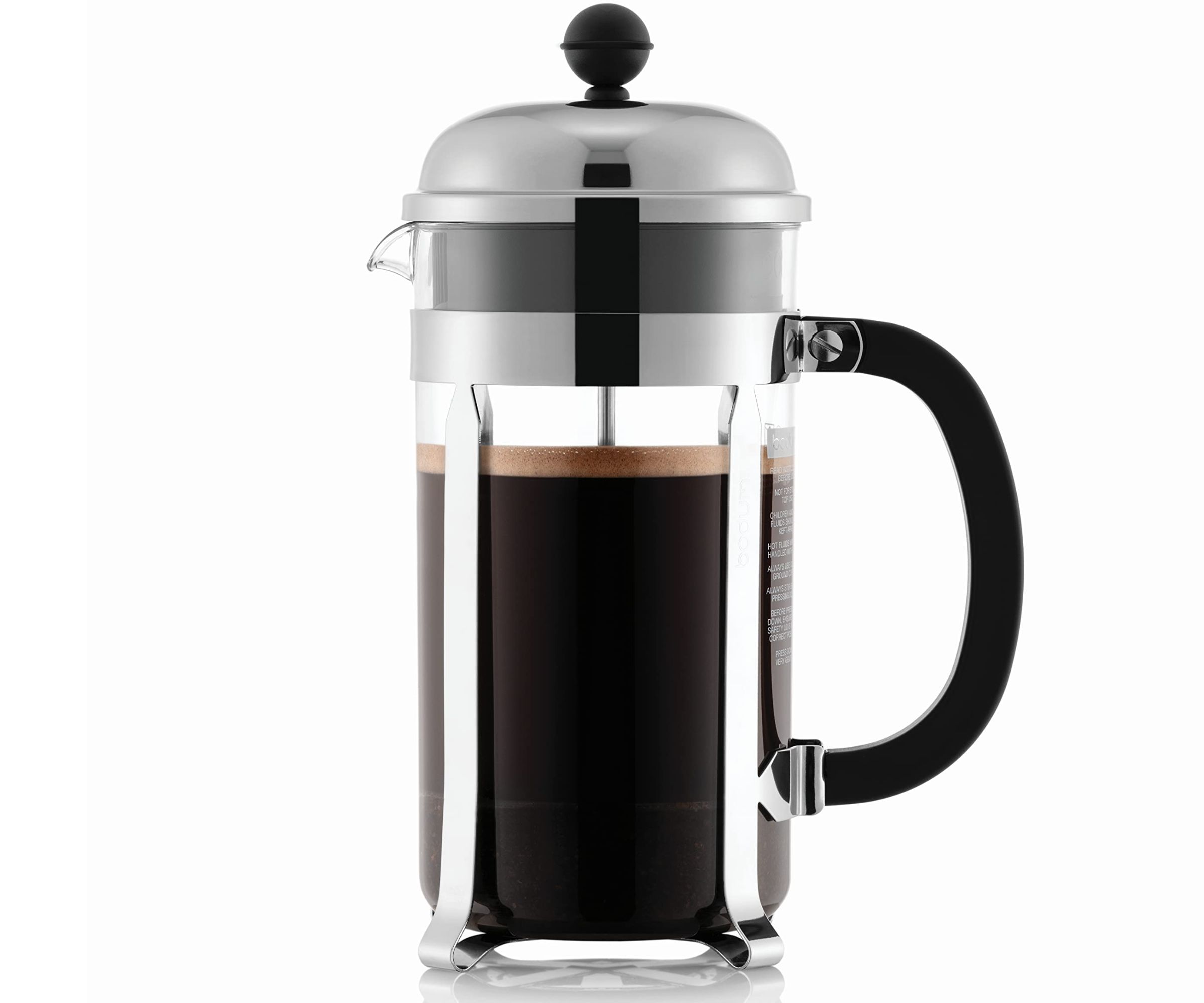
| Size | 34 oz (other sizes 12, 17, 51 oz) |
| Dimensions | 5.6 x 4.3 x 9.1 inches |
| Weight | 1.25 lbs |
| Material | Chrome-plated steel and glass |
| Dishwasher safe | Yes |
Unboxing
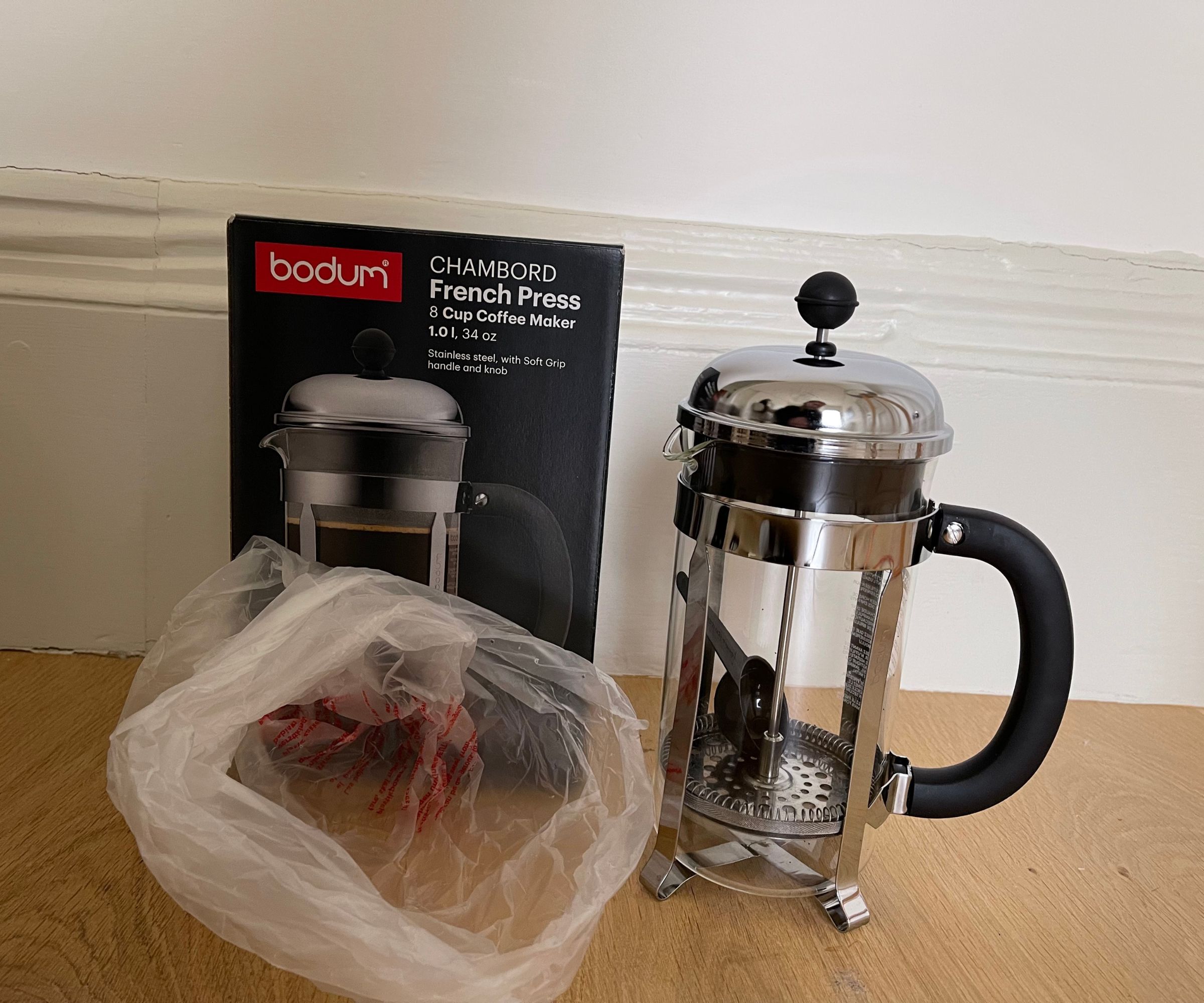
Bodum's minimalistic design is reflected in their simple packaging. The Chambord arrived in a compact, smart box. Inside, there was a thin, soft plastic sleeve around the assembled French press, ensuring that it stayed shiny in transit. This might be harder to recycle than cardboard, but there's only a small amount of it and you can normally find a recycling center which will accept it.
On the countertop, this was everything I expected it would be. The elegant design looks classic and simple. Bodum throws in a neat coffee scoop, which is useful for coffee drinkers who don't want to spend lots of time weighing out their grounds. It's a nice touch.
The glass carafe lifts neatly out of the chrome-coated steel frame. I worried a little that the handle might not be comfortable to hold, but the grippy plastic is actually really tactile, with a little softness, so it's great to pour.
Who would it suit?
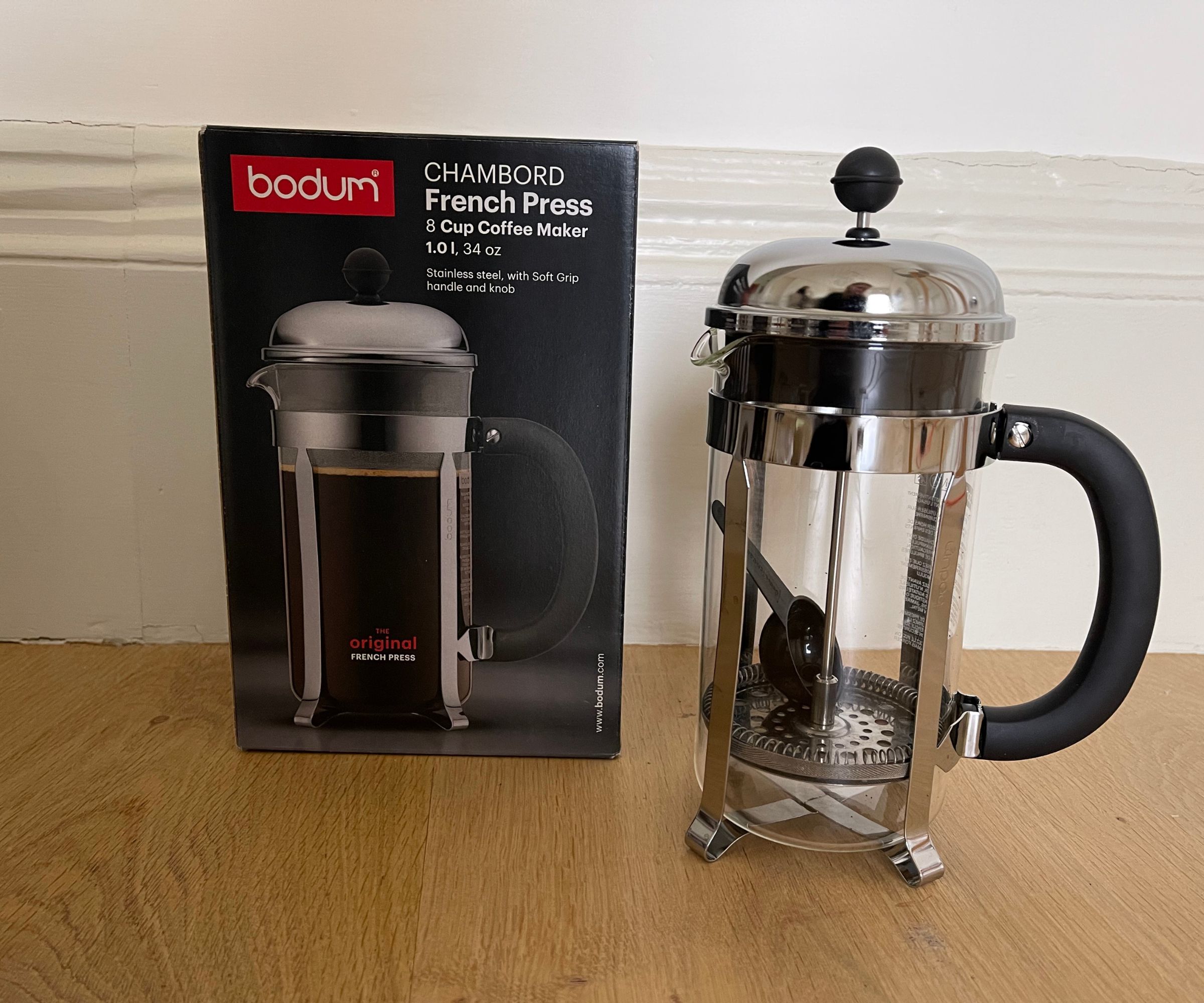
The sheer simplicity of the Chambord makes it perfect for first time French press owners. You can't go wrong with brewing thanks to the glass carafe. You can consult the color of your coffee to see how strong your coffee is before you plunge and pour.
Design expertise in your inbox – from inspiring decorating ideas and beautiful celebrity homes to practical gardening advice and shopping round-ups.
Simplicity can be a double-edged sword. Whilst this is super easy to use, it lacks some finesse. The thin glass walls aren't the best insulators, so if you're forgetful, it's likely that you'll come back to a cold carafe of coffee.
I've also tested some French presses which offer the filter pouring spout all around the whole circumference of the lid of the French press (the Fellow Clara French press, available at Amazon, does a particularly good job of this). The Chambord needs to be very specifically positioned to achieve a smooth pour.
The Chambord model that I tested has an eight-cups, which is perfect for homes of about four people. If you're a single-person home, you can opt for the smaller model and if you have more cups to fill, there's a 51 ounce Bodum Chambord, available at Amazon. It covers all options.
What is it like to use?
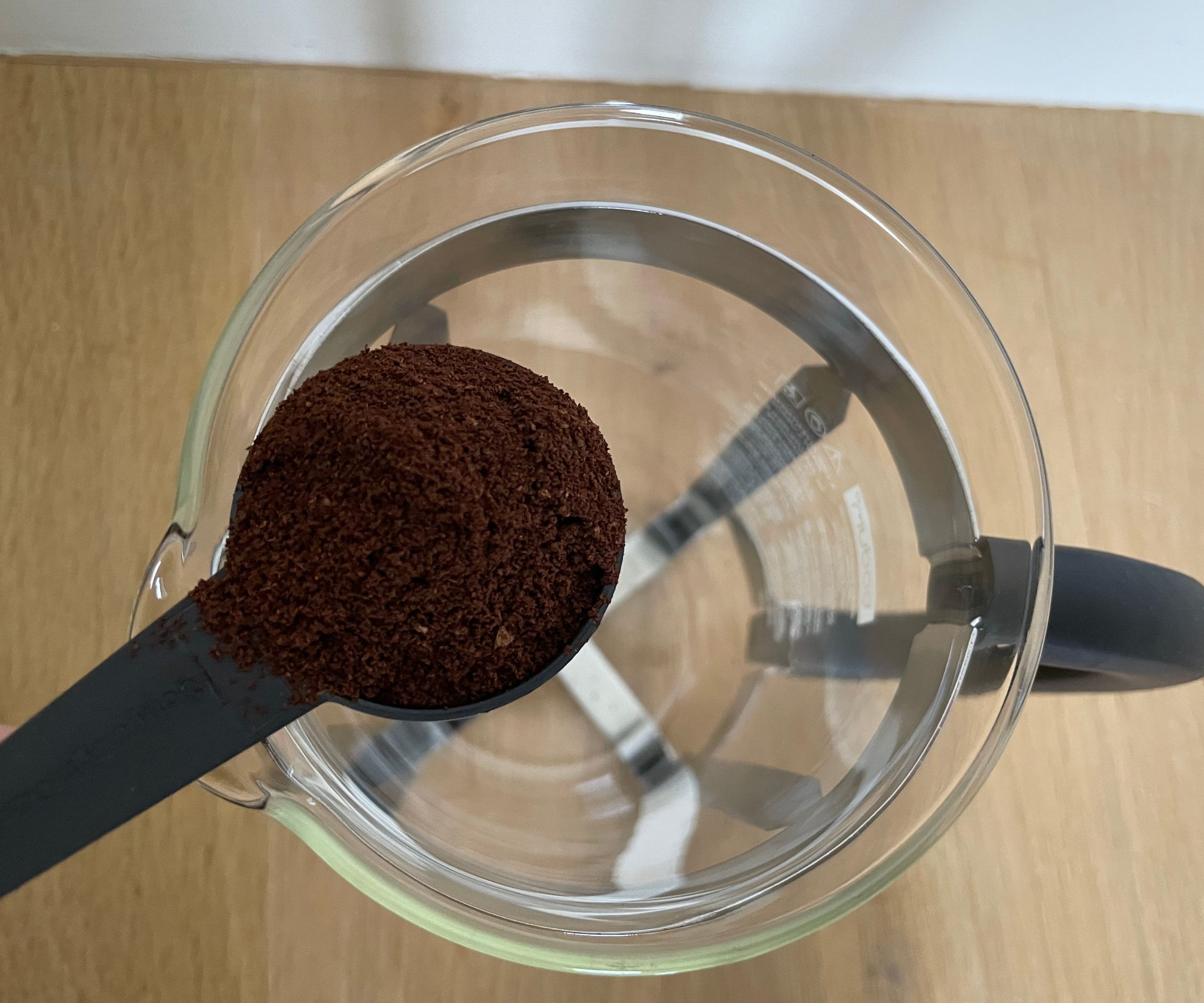
Bodum incudes a small set of paper instructions to show you how to make French press coffee in the Chambord. There's even videos online if you want a bit more support. However, if you're not fussed about the finer details, you won't need to consult any forums. This is easy to use.
I used the scoop to add one scoop of coarsely ground coffee. This measures at 0.4 oz (11.5 grams), so I followed the 1:12 coffee to water ratio and added 4.8 oz of hot water for a single serving of coffee. I steeped my coffee for five minutes with the filter lid screwed round to keep it as insulated as possible.
When my five minute timer went off, I touched the outside of the carafe, which was warm, but not too hot to lift if needed. The fact that the rest of the carafe had warmed up suggested to me that my coffee might have cooled too much, so I took a temperature reading. The coffee was 180 degrees, which is on the cooler side, but I didn't pre-warm my carafe, so am partly to blame.
I poured myself a cup of coffee from the carafe and it was beautiful. The double filters kept all my coffee grounds on the right side of the filter . My coffee tasted rich and smooth, although, it was surprisingly sweet for a French press. Normally there's more acidity. This could be because the beans that I were using are a slightly sweeter variety and it could also be because it brewed a little cooler.
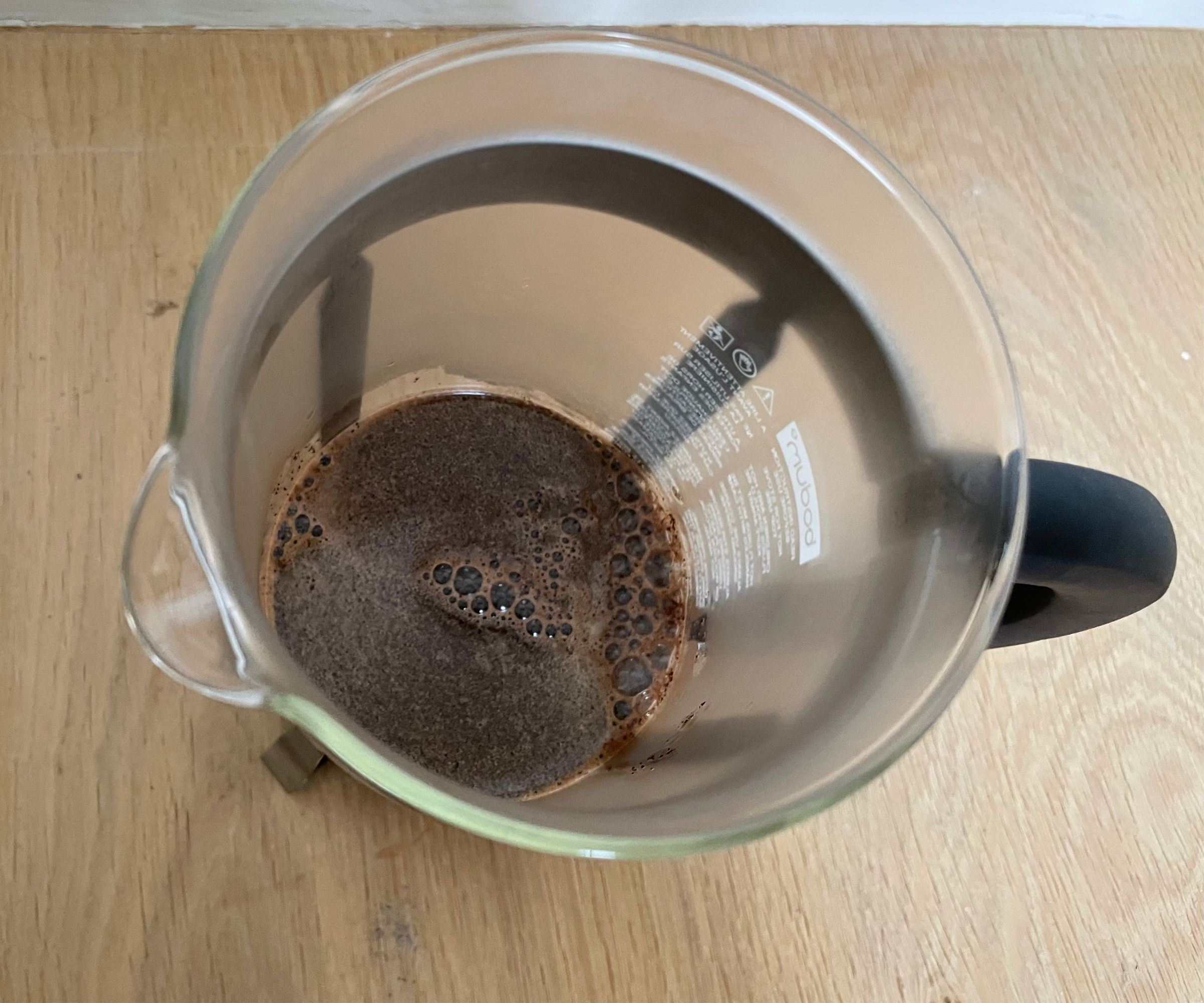
I wanted to check that the cooler coffee brewing temperature wasn't affecting my results, so I brewed a three-cup carafe of coffee. I ran the glass carafe under hot water and dried it. This meant that it was warmed before I added three scoops of coffee into my carafe. I poured my water in accordingly and let it brew. I really enjoyed having a glass carafe. Being able to see the color of the coffee is both satisfying and incredibly useful: I could make sure that my coffee looked like it was ready to pour rather than using an arbitrary five minute timer.
I followed all the same processes, but forgot to rotate the domed lid when I was pouring. This means I didn't have my filter in the right place and the coffee sort of dribbled out. I quickly realised this fault and spun the filter around, instantly getting a much smoother pour. This isn't a unique feature of the Chambord, so I should have known better. However, it was still a little frustrating when models like the Fellow Clara have filters which go all the way around the lid (there's no need to line-up anything).
My bigger batch was still smooth and delicious. It might have tasted a little more acidic, but it was still really drinkable.
Cleaning, storage, and maintenance
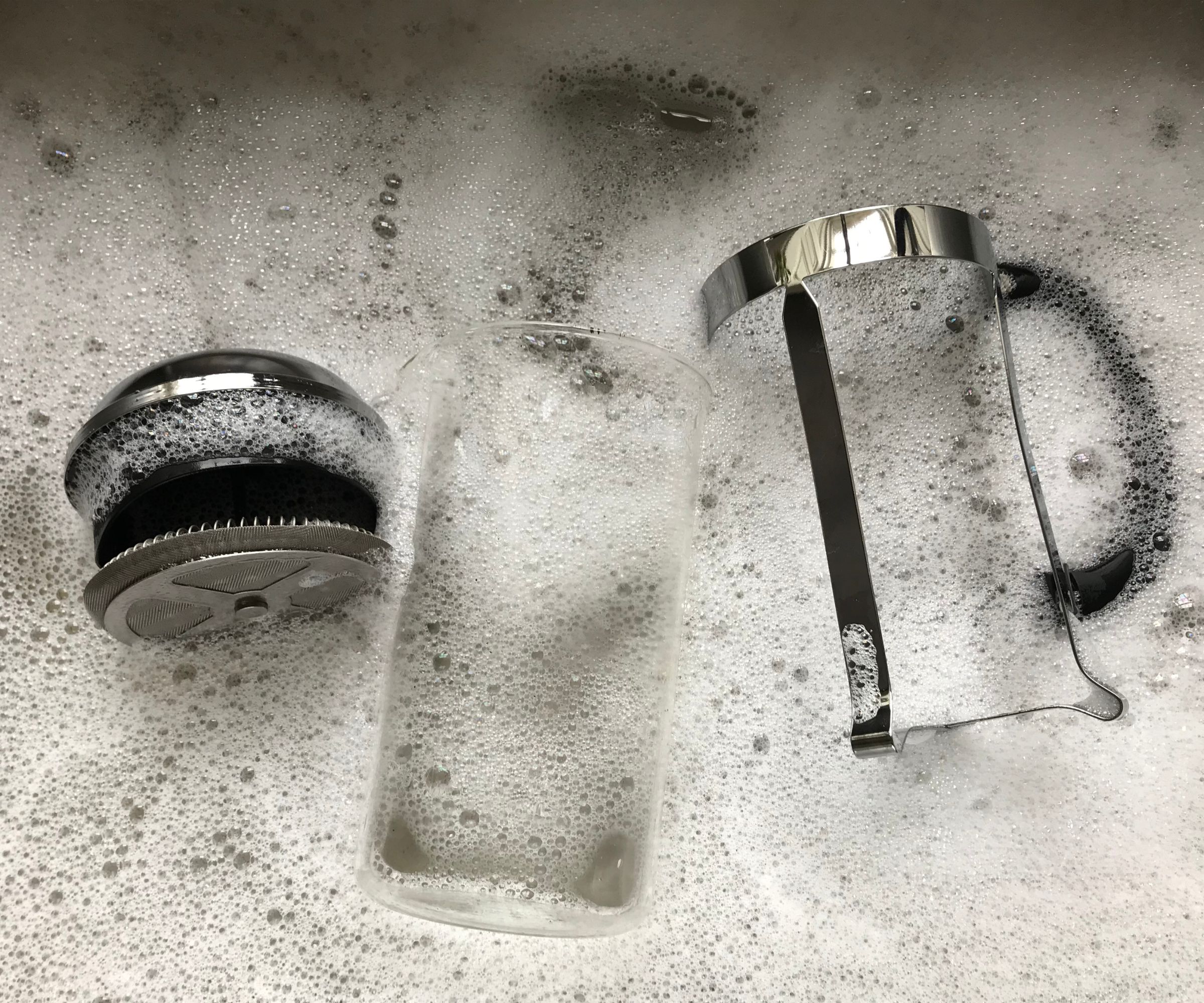
You reap the rewards of a glass carafe in the clean-up. All of the parts of the Chambord are dishwasher safe. Personally, I prefer to hand-wash mine, so that I can take the filter apart, ensuring that I get every last coffee ground out of my French press.
I tested the Chambord in my deep drawer and it was low enough for me to still be able to close the drawer. Make sure you measure yours, but I would imagine that this means you can sit it in cupboards if you need to. This is also a very beautiful French press, so if you want to curate a coffee nook around it.
How does it rate online?
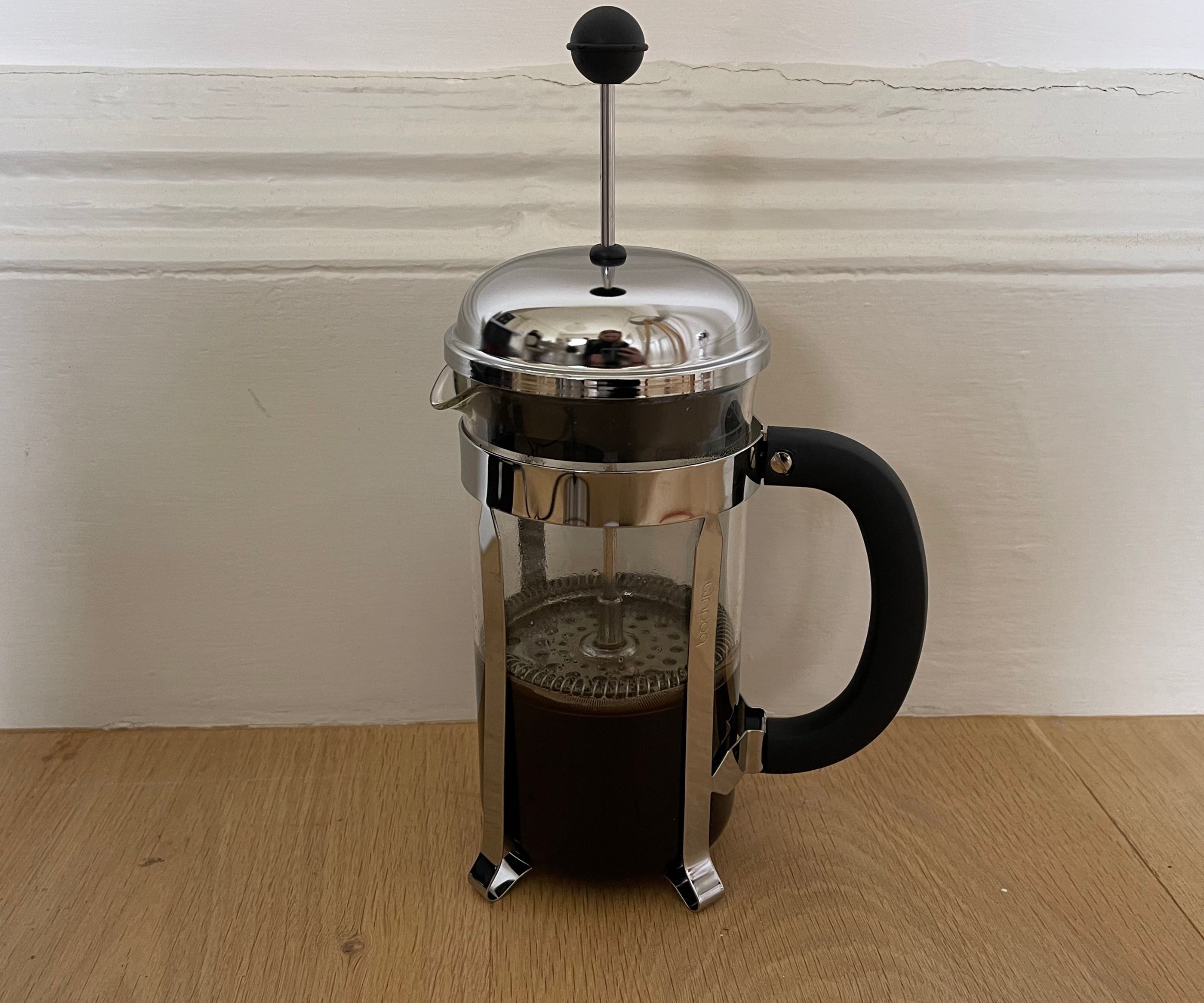
The Chambord's reputation precedes it. Given that this was designed in the 50s and is still gracing our Sunday morning coffee set-ups today, it's should come as no surprise that this is popular online. It's in most of the best French press buying guides, because it's earned a well-deserved spot in them.
Reviewers always comment on the value of the Chambord: it's one of the cheapest French presses on the market without feeling like it. In fact, it's still a pretty classy option. Lots of people love the aesthetics and range of finishes and sizes to choose from too.
Reviewers had some complaints about the Chambord, which I actually couldn't find replicated in customer reviews. They said that the plunger can wobble and that the frame slips a little in some cases. I don't know if this was an unfortunate fault, because mine was fine. However, I have a similar Alessi 9094 French press, available at Alessi, and the stainless steel frame slips on that.
How does it compare?
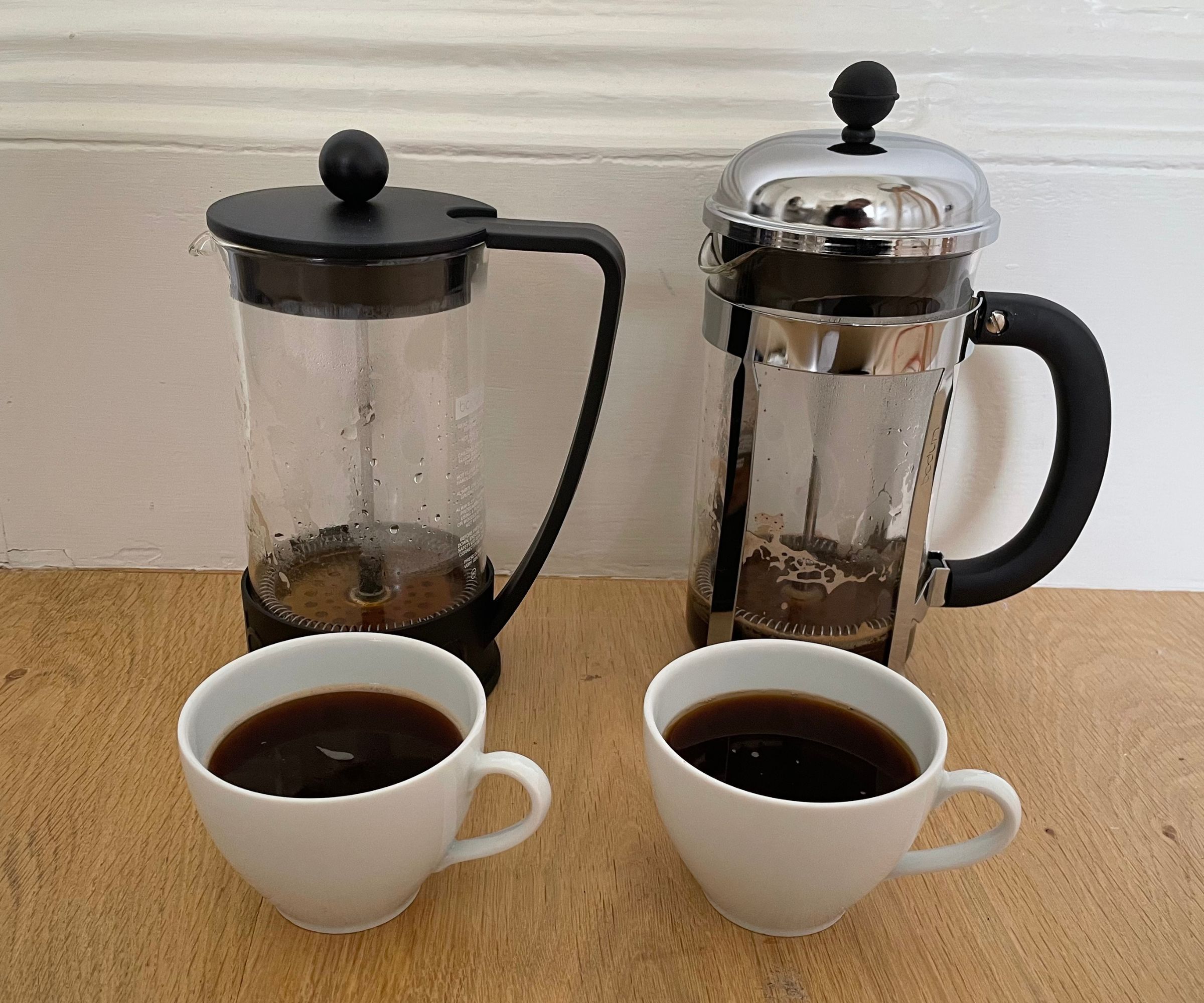
I tested this alongside Bodum's slightly newer French press, the Bodum Brazi, available at Amazon. If you're choosing between Bodum models, even though the Brazil looks more modern, I would opt for the Chambord. The timeless design of the Chambord means that it's less likely to date and it is incredibly easy to use.
The Brazil's plunger is a little fiddly to insert when the filter is lifted. I didn't have any difficulties like this with the Chambord. Plus the Brazil's fixed plastic carafe makes it difficult to clean, especially if you get coffee on the outside of your French press.
Flavor wise, I thought I got less sediment and a slightly smoother flavor profile from the Chambord. Both were impressive, especially for more affordable models, but, after leaving my cup, I could see thicker coffee at the bottom of my Brazil glass, which means that I got to enjoy less of the full flavors.
If you're willing to look outside of the Bodum, I recommend the Espro P7, available at Amazon . This has double-walled insulation, helping to keep coffee warmer for much longer than the Chambord. It also doesn't have the Chambord's slightly awkward lid (which closes the spout for insulation) that made pouring difficult. The Espro also made slightly smoother coffee, because its filters are super-fine and really tightly sealed.
If you're clumsy, the Espro's stainless steel body can save you a lot of smashed glass and spilt coffee. However, for durability, you sacrifice transparency. As I said, this isn't to be underestimated. It makes it really easy to keep an eye on your coffee. Also, the Espro costs twice the price of the Bodum and that's at the best of times. If you're not ready to splurge and you don't need the Espro's insulation, you won't regret the Chambord.
Should you buy it?
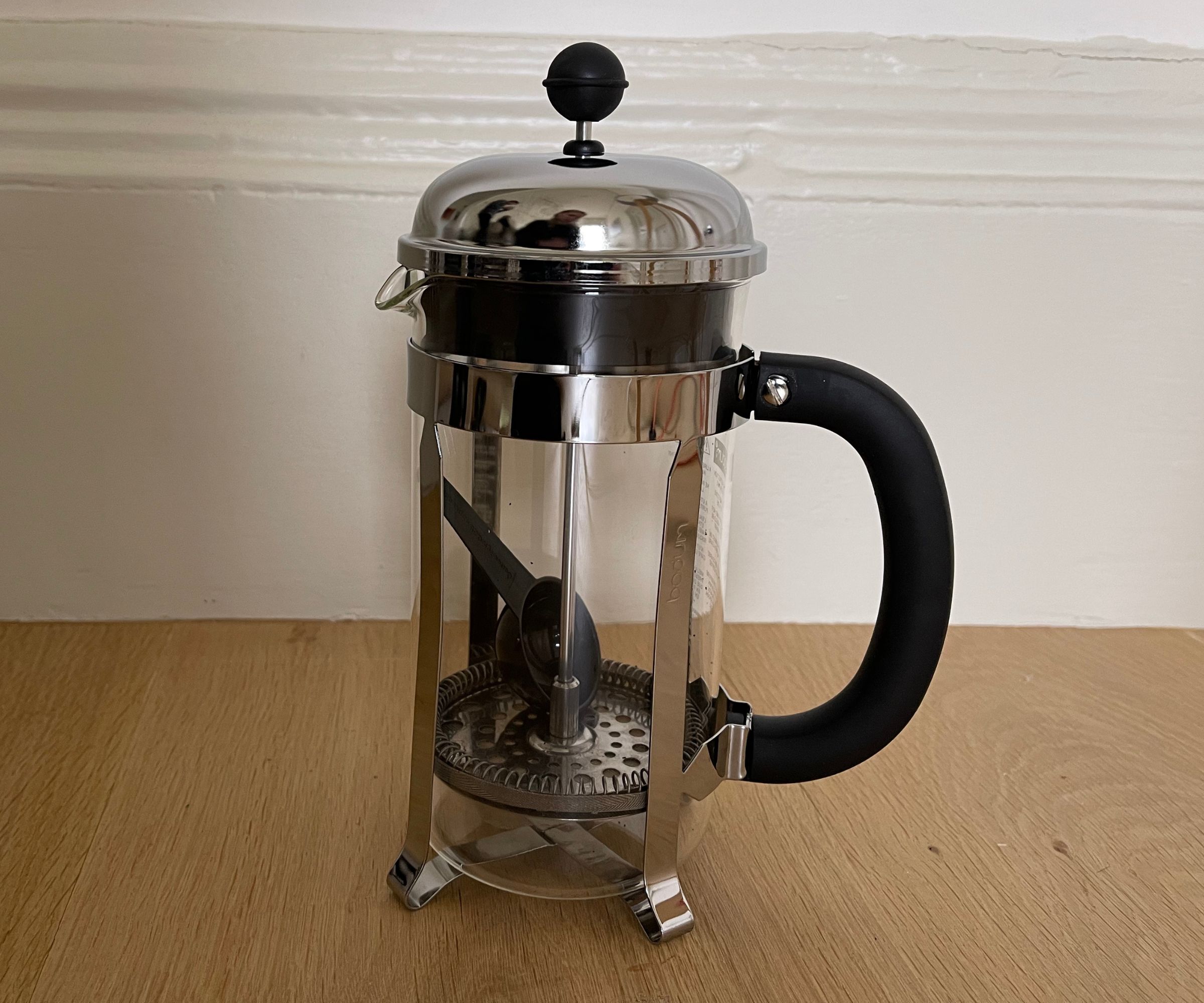
As someone who enjoyed the elegant aesthetic and ability to watch my coffee brew, I'd buy the Chambord over almost any other French press. It's reasonably priced and, arguably the most aesthetically pleasing. However, if you're clumsy or forgetful, you'd benefit from shopping an insulated, more durably built coffee maker.
How we test

At Homes & Gardens, we have put a lot of thought into how we test coffee makers. French presses are one of the most simple ways to brew a cup of coffee, but that doesn't mean we cruise in our tests. There's still a lot of factors we need to check.
The first things we write about are the aesthetics and unboxing of French presses. Whilst we know that looks aren't everything, it's helpful if you love looking at your French press. You might even have a coffee nook where you want to store it, so it's important that you're happy with the dimensions, build-quality, and general appearance of your coffee maker. We'll also let you know if there's a lot of packaging to dispose of and if your French press needs any prep work before it can get brewing.
Next, we'll get onto the taste testing. Our experts follow the traditional 1:12 coffee to water ratio for every French press. We try to brew them with the same beans, so that we can directly compare flavors across every model we test, even if they're not all in the same place at the same time.
The first test we put a French press through is a single serving. Sometimes, all you'll want is a single cup of coffee, so we think it's important to know if your French press can maintain temperature and filtration, even if the carafe isn't full to the brim. We leave our coffee to steep for five minutes before plunging. We'll do a temperature check (hoping that the coffee is between 195 and 205 degrees) and then a taste test. Our experts drink their way through the cup, looking for sediment and grains towards the end. These could stand in the way of you enjoying every last drop of your cup.
We'll carry out all the same tests for a full carafe, so we can see how consistent the French press is across larger quantities. We promise, it's not just an excuse for our experts to drink more coffee, although, they don't mind it at all.
After they've consumed as much coffee as they need to to feel confident on the flavors, drinkability, and consistency of the French press, we make notes on the clean-up, storage, and maintenance of the French press. We also compare the French press to all the other ones we've tested.

Laura is our eCommerce editor. As a fully qualified barista, she's our expert in all things coffee and has tested over thirty of the best coffee makers on the market. She has also interviewed Q-Graders and world-leading experts in the coffee industry, so has an intimate knowledge of all things coffee. Before joining Homes & Gardens, she studied English at Oxford University. Whilst studying, she trained as a master perfumer and worked in the luxury fragrance industry for five years. Her collection of home fragrance is extensive and she's met and interviewed five of the world's finest perfumers (also known as 'noses'). As a result of this expansive fragrance knowledge, she always puts quality and style over quantity and fads. Laura looks for products which have been designed simply and with thoughtful finishes.